Blog - Phobias
Overcoming Pyrophobia: Conquer Your Fear of Fire Phobia
By Dr. Lynn M. Panatonni (PhD), Advisory board member at PsyTech VR
February 06, 2025

Fire, a crucial element in the development of human civilization, has been used for various tasks for thousands of years. However, for some, the sight or thought of fire can trigger intense fear and anxiety, a condition known as pyrophobia. It is important to note that a healthy understanding of fire's potential danger is normal and beneficial. Pyrophobia, on the other hand, is intense enough to disrupt the daily routines of many, making it overwhelming to perform regular tasks such as cooking or attending social gatherings.
The primary goal of this article is to provide a comprehensive understanding of pyrophobia, including its causes and symptoms. We will also explore the various treatment options available in modern medicine, combining them with Virtual Reality Therapy tools. Our aim is to equip you with the knowledge and resources necessary to take the first steps towards conquering this fear, reassuring you that effective treatments are within reach.
The primary goal of this article is to provide a comprehensive understanding of pyrophobia, including its causes and symptoms. We will also explore the various treatment options available in modern medicine, combining them with Virtual Reality Therapy tools. Our aim is to equip you with the knowledge and resources necessary to take the first steps towards conquering this fear, reassuring you that effective treatments are within reach.
Understanding Pyrophobia and its Causes
What is Pyrophobia?
Pyrophobia is an irrational and persistent fear of fire extending above and beyond regular caution. The term in question takes roots in the Ancient Greek words pyro and phobos meaning "fire" and "fear," respectively. Due to its significant difference from rational concerns about fire safety, pyrophobia has a classification of a specific phobia, according to the Diagnostic and Statistical Manual of Mental Disorders (DSM-5).
The condition in question has a few important distinguishable traits that make it different from regular fire safety:
• The anxiety does not leave even in situations where the fire is controlled.
• The person susceptible to the fear can understand it is unreasonable or excessive.
• The response to the threat caused by fire is entirely disproportionate.
• The fear itself can influence daily functioning in a significant fashion.
The condition in question has a few important distinguishable traits that make it different from regular fire safety:
• The anxiety does not leave even in situations where the fire is controlled.
• The person susceptible to the fear can understand it is unreasonable or excessive.
• The response to the threat caused by fire is entirely disproportionate.
• The fear itself can influence daily functioning in a significant fashion.
The Causes and Risk Factors of Pyrophobia
Pyrophobia's development can be attributed to several common factors, including:
• General predisposition is supported by numerous studies that indicate that individuals with a family history of specific phobias or anxiety disorders may have a higher likelihood of developing phobias, such as pyrophobia.
• Environmental factors may include exposure to others' negative reactions to fire, early childhood experiences, cultural or societal attitudes toward fire, or even vicarious conditioning – observing others' extreme fear responses.
• Traumatic experiences often include past incidents with fire – being caught in a house fire or witnessing severe fire-related incidents. Indirect exposure through media coverage of industrial incidents or wildfires can play its part in the development of pyrophobia.
• General predisposition is supported by numerous studies that indicate that individuals with a family history of specific phobias or anxiety disorders may have a higher likelihood of developing phobias, such as pyrophobia.
• Environmental factors may include exposure to others' negative reactions to fire, early childhood experiences, cultural or societal attitudes toward fire, or even vicarious conditioning – observing others' extreme fear responses.
• Traumatic experiences often include past incidents with fire – being caught in a house fire or witnessing severe fire-related incidents. Indirect exposure through media coverage of industrial incidents or wildfires can play its part in the development of pyrophobia.
Common Scenarios and Triggers of Pyrophobia
Several event types can trigger pyrophobic responses, which can be divided into two large groups: immediate and secondary.

Immediate fire sources are:
• Fireplaces
• Gas stoves
• Candles
• Matches
• Lighters
• Barbeque grills
Secondary triggers for pyrophobia are:
• Fire alarms.
• Smoke's smell.
• The sound of crackling flame.
• News reports about wildfires or arson.
• Certain symbolic representations of fire – videos, pictures, etc.
• Fireplaces
• Gas stoves
• Candles
• Matches
• Lighters
• Barbeque grills
Secondary triggers for pyrophobia are:
• Fire alarms.
• Smoke's smell.
• The sound of crackling flame.
• News reports about wildfires or arson.
• Certain symbolic representations of fire – videos, pictures, etc.
Pyrophobia's Relation to Other Conditions or Phobias
It is not uncommon for pyrophobia to share similarities or even coexist with several other anxiety-related conditions, including:
• Photophobia – can be triggered by fire's general brightness, even if the phobia is a fear of light.
• Thermophobia – fear of any heat in general, including fire.
• Arsonphobia – shares a lot of common ground with pyrophobia but is only applicable in the context of arson.
• PTSD (Post-Traumatic Stress Disorder) – applicable when the context of fire-related trauma is present.
• Photophobia – can be triggered by fire's general brightness, even if the phobia is a fear of light.
• Thermophobia – fear of any heat in general, including fire.
• Arsonphobia – shares a lot of common ground with pyrophobia but is only applicable in the context of arson.
• PTSD (Post-Traumatic Stress Disorder) – applicable when the context of fire-related trauma is present.
Recognizing Different Signs of Pyrophobia
Emotional and Physical Symptoms
Individuals with pyrophobia may experience a wide range of sharp physical symptoms, including excessive sweating, trembling or shaking, rapid heartbeat, dizziness, and shortness of breath.
As for the emotional or cognitive reactions, pyrophobia is often associated with an intense desire to escape, an overwhelming sense of panic, difficulty concentrating, racing thoughts focused on potential disasters, and anticipatory anxiety.
As for the emotional or cognitive reactions, pyrophobia is often associated with an intense desire to escape, an overwhelming sense of panic, difficulty concentrating, racing thoughts focused on potential disasters, and anticipatory anxiety.
Pyrophobia's Impact on Daily Life
Pyrophobia has significant potential to interrupt different aspects of day-to-day life. It can bring challenges into domestic life, create several social implications, and even cause a certain degree of professional impact in some cases.
The domestic challenges pyrophobia may include:
• Avoidance of specific heating systems.
• Inability to manage fireplaces or light candles.
• Reluctance to use the stove or cook in general.
• Unnecessary checking of safety equipment and fire alarms.
The social implications of such a phobia are also somewhat evident:
• Traveling limitations due to the fear of hotel fires.
• Inability to attend certain social gatherings revolving around bonfires or barbeques.
• Difficulty in attending any event that might use candles in some form.
• Complete avoidance of restaurants with open kitchens.
As for the professional impact of pyrophobia, it covers:
• Workplace anxiety regarding fire safety procedures.
• Problematic participation in any office celebrations that involve cake with candles.
• Career limitations in some industries.
The domestic challenges pyrophobia may include:
• Avoidance of specific heating systems.
• Inability to manage fireplaces or light candles.
• Reluctance to use the stove or cook in general.
• Unnecessary checking of safety equipment and fire alarms.
The social implications of such a phobia are also somewhat evident:
• Traveling limitations due to the fear of hotel fires.
• Inability to attend certain social gatherings revolving around bonfires or barbeques.
• Difficulty in attending any event that might use candles in some form.
• Complete avoidance of restaurants with open kitchens.
As for the professional impact of pyrophobia, it covers:
• Workplace anxiety regarding fire safety procedures.
• Problematic participation in any office celebrations that involve cake with candles.
• Career limitations in some industries.

Pyrophobia can bring challenges into life and create social implications
Early Warning Signs of Pyrophobia
Early intervention is possible for pyrophobia, but only when the early manifestation signals are recognized, such as increased vigilance about fire safety, growing discomfort with controlled flames, intrusive thoughts about potential fire scenarios, and the development of avoidance behaviors. As well as behavioral changes such as:
- unnecessary reassurance about fire safety measures
- compulsive fire-related news checking
- the development of ritualistic behaviors around fire prevention.
Potential Reactions to Different Types of Fires
Similar to practically any phobia, the response to pyrophobia is not always identical for everyone, and there are many degrees of severity that vary depending on the person in question, as well as on the fire context.
For example, a controlled fire setting like candles or matches is most likely to induce a milder response than the use of outdoor grills or kitchen stoves. At the same time, emergency fire scenarios are guaranteed to affect people severely, even if the effect of a vehicle fire is probably much smaller than that of a building or a forest fire.
Each fire type can induce different levels of anxiety in certain people, and the reaction itself is also sure to vary from one person to another depending on other contextual factors.
For example, a controlled fire setting like candles or matches is most likely to induce a milder response than the use of outdoor grills or kitchen stoves. At the same time, emergency fire scenarios are guaranteed to affect people severely, even if the effect of a vehicle fire is probably much smaller than that of a building or a forest fire.
Each fire type can induce different levels of anxiety in certain people, and the reaction itself is also sure to vary from one person to another depending on other contextual factors.
Treatment Approaches to Pyrophobia
Professional Treatment
Professional intervention is usually how most people overcome pyrophobia. Modern-day psychological and psychiatric approaches recognize the necessity of a carefully structured combination of therapeutic techniques to treat fire-related phobias such as pyrophobia. Even though traditional talk therapy can still act as a stable foundation for further measures, the usage of specialized approaches such as Exposure Therapy, Systematic Desensitization, or Cognitive Behavioral Therapy is still necessary when it comes to treating highly specific phobias such as pyrophobia.
Potential treatment options available to people with pyrophobia are:
Potential treatment options available to people with pyrophobia are:
- Family therapy support.
- Medical evaluation (if necessary).
- Individual psychotherapy.
- Combined therapy approaches.
- Group therapy sessions.
Therapy Types
CBT

Cognitive Behavioral Therapy (CBT) is at the forefront of any pyrophobia treatment. The primary focus of CBT is to help people identify and challenge their destructive thought patterns, such as those related to fire. Therapists guide patients through fear examination processes during CBT sessions, helping them apply logic to the unreasonable elements and understand the difference between irrational fear and reasonable caution.
For example, if a person with pyrophobia believes that any flame will inevitably lead to an uncontrollable fire, CBT can help them see this line of thought as catastrophic thinking, developing a much more balanced perspective on the matter. Regarding pyrophobia specifically, therapists help people understand that modern safety measures are thoroughly sculpted and tested to ensure that controlled fires, such as candles or stovetops, are entirely safe when managed properly.
For example, if a person with pyrophobia believes that any flame will inevitably lead to an uncontrollable fire, CBT can help them see this line of thought as catastrophic thinking, developing a much more balanced perspective on the matter. Regarding pyrophobia specifically, therapists help people understand that modern safety measures are thoroughly sculpted and tested to ensure that controlled fires, such as candles or stovetops, are entirely safe when managed properly.
Exposure therapy
on the other hand, uses a gradual introduction of fire-related stimuli in a controlled and safe environment for the people affected by pyrophobia to develop both confidence and coping skills as therapy progresses.
Therapy Duration and Expected Outcomes
The overall timeline of pyrophobia treatment tends to vary significantly from one person to another, even if most of them operate within a similar pattern. For example, the initial assessment and strategy development usually takes several sessions to work out as the therapist gains an understanding of the patient's fear, as well as its origin.
Active treatment is what follows in most cases, starting with weekly sessions and gradually transitioning to a less frequent schedule as progress is made. Most patients experience a gradual reduction in anxiety as these meetings progress, even though the progress in question is not always linear – with some weeks feeling like a step backward, while others are seen as noticeable improvements (both of which are entirely natural for such lengthy recovery processes).
Eliminating all anxiety about a specific phobia is not always the result of successful treatment. The primary goal for a therapist is to help patients develop a healthy and manageable relationship with the object of their fears, such as flames in pyrophobia. Most patients report feeling control within 3-6 months of consistent therapy sessions, but some take longer to achieve their goals.
Active treatment is what follows in most cases, starting with weekly sessions and gradually transitioning to a less frequent schedule as progress is made. Most patients experience a gradual reduction in anxiety as these meetings progress, even though the progress in question is not always linear – with some weeks feeling like a step backward, while others are seen as noticeable improvements (both of which are entirely natural for such lengthy recovery processes).
Eliminating all anxiety about a specific phobia is not always the result of successful treatment. The primary goal for a therapist is to help patients develop a healthy and manageable relationship with the object of their fears, such as flames in pyrophobia. Most patients report feeling control within 3-6 months of consistent therapy sessions, but some take longer to achieve their goals.
Picking the Correct Mental Health Professional
A significant portion of the success in therapy depends on whether the patient can find an appropriate therapist. In a perfect world, a specific experience treating anxiety and phobias is a given for a therapist of your choice, as well as a strong background in exposure therapy techniques. It is incredibly important to consider a therapist's treatment approach, experience with specific phobias important to the patient, and their familiarity with the more modern treatment approaches, such as Virtual Reality Therapy.
Initial consultations can be used to interview the therapist and inquire about their experience, preferred treatment methods, success rates, and so on. The therapeutic relationship is necessary for success, which is why all patients should strive to find therapists who make them feel understood.
Initial consultations can be used to interview the therapist and inquire about their experience, preferred treatment methods, success rates, and so on. The therapeutic relationship is necessary for success, which is why all patients should strive to find therapists who make them feel understood.
Self-Help and Coping Approaches
Techniques for Breathing and Relaxation
Fundamental anxiety management skills can help a lot when treating many kinds of phobias or fears, including pyrophobia. For example, diaphragmatic breathing is highly recommended to form the cornerstone of self-regulation during anxiety episodes. It is a simple technique involving taking deep breaths from the diaphragm instead of shallow chest breaths that often exacerbate existing panic symptoms.
The 4-7-8 breathing method can also prove effective against many different phobias. It involves:
- Inhaling for 4 seconds.
- Holding your breath for 7 seconds.
- Exhaling for 8 seconds.
Regular practice with these techniques alone should strengthen their effectiveness during anxiety attacks and phobia-induced triggers.
Mindfulness Practices
Mindfulness differs slightly from most traditional relaxation techniques because it focuses on present-moment awareness instead of trying to achieve a specific "calm" state in a difficult situation. Mindfulness can help people with pyrophobia to break the cycle of catastrophic thinking that is often accompanied by fear.
The practice of mindfulness focuses on observing anxiety-inducing thoughts and triggers without judgment, only acknowledging them as thoughts instead of threats. The most straightforward exercises here can try to focus on present sensations, maintaining awareness that you are still in a secure environment and the trigger is most likely safely contained.
The practice of mindfulness focuses on observing anxiety-inducing thoughts and triggers without judgment, only acknowledging them as thoughts instead of threats. The most straightforward exercises here can try to focus on present sensations, maintaining awareness that you are still in a secure environment and the trigger is most likely safely contained.
Visualization Exercises
Visualization can also be a strong tool against phobic responses due to the ability to build resilience using a completely safe and self-controlled environment, which makes it different from exposure therapy.
Common visualization exercises include imagining a protective shield or bubble around you that keeps you safe while allowing you to observe the phobia trigger from a distance (such as fire). As comfort grows, visualizations can gradually introduce closer encounters with the triggers while maintaining a sense of control and safety. The key here is to simultaneously create a comprehensive coping strategy by combining visualization exercises, breathing techniques, and other measures.
Common visualization exercises include imagining a protective shield or bubble around you that keeps you safe while allowing you to observe the phobia trigger from a distance (such as fire). As comfort grows, visualizations can gradually introduce closer encounters with the triggers while maintaining a sense of control and safety. The key here is to simultaneously create a comprehensive coping strategy by combining visualization exercises, breathing techniques, and other measures.
Forming Support Networks
Recovery from pyrophobia should never be a solitary journey. On the contrary, strong support networks can offer practical and emotional assistance in difficult times. Such a network does not have to include only family members; it can also be close friends, mental health professionals, and even online support groups of people with the same phobias.
vret
VR Therapy Tools for Pyrophobia
Virtual Reality technology introduced a completely new way to treat phobias by creating a proverbial bridge between exposure and imaginal therapy
How VR Operates for Exposure Therapy
Virtual Reality technology introduced a completely new way to treat phobias by creating a proverbial bridge between exposure and imaginal therapy. A combination of haptic feedback devices and VR headsets makes it possible to put patients through controlled scenarios with their phobias, such as fire, while operating in a completely safe environment.
The technology in question creates detailed three-dimensional environments that are easy to immerse yourself in, allowing for an accurate calibration of the intensity of exposure to match the therapeutic process of each patient separately. It often relies on multiple sensory inputs at once—spatial audio, visual representations, and even heat generators in some cases (for thermal feedback). Such a multi-sensory approach can assist with creating a more effective therapeutic experience from the complete safety of a real-life environment.
The technology in question creates detailed three-dimensional environments that are easy to immerse yourself in, allowing for an accurate calibration of the intensity of exposure to match the therapeutic process of each patient separately. It often relies on multiple sensory inputs at once—spatial audio, visual representations, and even heat generators in some cases (for thermal feedback). Such a multi-sensory approach can assist with creating a more effective therapeutic experience from the complete safety of a real-life environment.
The Advantages of VR in Therapy
Such an approach is called Virtual Reality exposure therapy, or VRET. It provides several unique advantages over most traditional exposure methods, such as the ability to control the virtual environment to an impressive degree – modifying or pausing the exposure intensity at a moment's notice for a much more controlled experience.
Research has shown that VRET can offer comparable or better results than conventional exposure therapy in many situations. Its immersive nature helps with coping skill development in realistic scenarios without losing the sense of safety and security. Such a balance between control and realism often contributes to the better retention of therapeutic gains and faster treatment progress.
Research has shown that VRET can offer comparable or better results than conventional exposure therapy in many situations. Its immersive nature helps with coping skill development in realistic scenarios without losing the sense of safety and security. Such a balance between control and realism often contributes to the better retention of therapeutic gains and faster treatment progress.
VRET
PsyTech VR and Pyrophobia
Modern VR applications, used by the clinicians for pyrophobia treatment, such as PsyTech VR, can offer sophisticated features to enhance the therapeutic experience. It can offer the following capabilities:
- Interactive elements to practice safety procedures and coping strategies in virtual environments.
- Real-time tracking of psychophysiological responses - such as heart rate and skin conductance - provides continuous data throughout the session.
- Progressive scenario development capabilities offer gradual progression in phobia treatment by offering more complex situations around the phobia triggers, such as fire.

PsyTech VR's software also supports the most popular VR headset, such as Quest 3 / Quest 3s / Quest 2, HTC Vive and Pico 4, making it relatively inexpensive compared with previous-generation VR hardware.
PsyTechVR: made by professionals,
for professionals
These psychotherapists and psychologists define the development of our product and methodology since 2020
- Dr. Albert "Skip" Rizzo
Leading expert in VR Therapy with 30+ years' experience.
VR scientist (ResearchGate)
Clinical psychologist. With 30+ years in VR research, Dr. Rizzo has developed groundbreaking VR tools for treating PTSD, TBI, autism - Dr. Udi OrenClinical psychologist and senior medical psychologist, PhDPast President at EMDR-EUROPE, Chief instructor of the EMDR method in Israel (Senior Trainer), President of Israel EMDR Association
- Dr. Gwilym RoddickPsychotherapist (DSW, LCSW), Founder of CBT of Central and South FloridaCBT/ERP/ACT expert, OCD Central and South Florida Board Member, ABCT committee member, Florida and New York based
- Dr. Lynn PanattoniClinical psychologist specializing in integrative and functional medicine, PhDLicensed clinical psychologist specializing in trauma, anxiety, and integrative mental health. Expert in CBT, mindfulness & lifestyle medicine
- Dr. Elizabeth McMahon
Clinical Psychologist since 1980, author of Virtual Reality Therapy for Anxiety" book
In memory of Dr. Elizabeth McMahon (1950-2024), whose vision and contributions continue to guide our mission - Dr. Gianni SerraClinical Psychologist and Psychotherapist, Certified Neuroscience specialistEvangelist of VR exposure therapy in Italy and member of the Italian Society of Cognitive Behavioral Psychotherapy
- Dr. Richard LambProfessor of Educational Psychology, Neurocognition Science Lab, University of GeorgiaPhD in science education and educational measurement. Dr. Lamb leverages neuroscience and VR to enhance STEM education
PsyTechVR:
by professionals,
for professionals
by professionals,
for professionals
These psychotherapists & psychologists define the roadmap and r&d of our company since 2020
Clinical Psychologist, Psychotherapist (CBT), Certified Neuroscience specialist
Dr. Gianni Serra
Evangelist of VR exposure therapy in Italy and member of the Italian Society of Cognitive Behavioral Psychotherapy
Dr. Albert "Skip" Rizzo
Clinical psychologist. With 30+ years in VR research, Dr. Rizzo has developed groundbreaking VR tools for treating PTSD, TBI, autism
Dr. Elizabeth McMahon
In memory of Dr. Elizabeth McMahon (1950-2024), whose vision and contributions continue to guide our mission
Clinical psychologist specializing in integrative and functional medicine, PhD
Dr. Lynn Panattoni
Licensed clinical psychologist specializing in PTSD, anxiety, and integrative mental health. Expert in CBT, mindfulness & lifestyle medicine
Psychotherapist (DSW, LCSW), Founder of CBT of Central and South Florida
Dr. Gwilym Roddick
CBT/ERP/ACT expert, OCD Central and South Florida Board Member, ABCT committee member, Florida and New York based
Clinical psychologist and senior medical psychologist, PhD
Dr. Udi Oren
Past President at EMDR-EUROPE, Chief instructor of the EMDR method in Israel, Chairman of Israel EMDR Association


Complete VR Bundle Package for $1599 *
Buying options
PsyTechVR Bundle
Your VR headset
Book a DEMO to get a 15-day FREE TRIAL, then use your own VR device or order a Meta Quest separately
15-day Free Trial, then $120/month
Includes the latest Meta Quest 3s, 12-month access, regular updates, support, training, and marketing materials
* Limited time offer until product is in stock
VR Bundle
Special offer: 35% off Storewide
$
1,599
$
2,499
- Latest Meta Quest 3s (128GB) VR Headset with the installed VR app
- 12-Month Access to PsyTechVR Platforms
- Generative-AI to create exposure scenarios
- Dedicated Support Manager
- Comprehensive 4-Hour Training & Certificate
- Exclusive Marketing Materials for your website and social media
*VR headset will belong to you with full access to the VR app store
Frequently Asked Questions
Learn more about Pyrophobia and VR
- Most general anxiety disorders involve broad and persistent worry across multiple situations, while pyrophobia is something that is focused exclusively on fears that are related to fire. The key difference is in the specificity of their triggers, with pyrophobic individuals being able to function without anxiety in most cases when not around fire or fire-related stimuli.
- The triggering potential of pyrophobia varies drastically from one person to another, with some people being more triggered by highly controlled flames while others are severely affected by wildfires. Research suggests that the size or type of fire is often less important than the context and perceived control over the situation.
- Technically speaking, pyrophobia can and will develop at any age, including childhood. Additionally, there are some factors that might make children even more susceptible to fire-related fears, such as the influence of traumatic experiences, higher likelihood of witnessing adults' fear responses, and limited understanding of fire control mechanisms.
Mental health specialists can explore PsyTechVR with a 15-day free trial, allowing you to experience the full range of AI-powered VR exposure therapy and relaxation tools.
For individuals interested in PsyTechVR, we offer a 7-day free trial, which you can access by booking a call using the scheduling system below.
During this call, we’ll guide you through the setup and answer any questions you may have.
For individuals interested in PsyTechVR, we offer a 7-day free trial, which you can access by booking a call using the scheduling system below.
During this call, we’ll guide you through the setup and answer any questions you may have.
- Get started today and discover how PsyTechVR can transform mental health therapy!
Thanks for reading!
Dr. Lynn M. Panattoni
Advisory Board member at PsyTechVR
She holds a specialization in anxiety, depression, attachment, pain, trauma, and transformative mental health approaches. Dr. Panattoni is knowledgeable in addressing various issues with lifestyle and mental health that result from autoimmune diseases, particularly Lyme disease. She is a known advocate for lifestyle medicine that focuses on stress management, nutrition, exercise, and sleep as the means of improving health outcomes.
Her primary approaches to therapy include Trauma-Focused Therapy, Limbic System Therapy, Cognitive Behavioral Therapy, Solution-Focused Brief Therapy, MindfulnessBased Therapy, Attachment-Based Therapy, and Family Systems. Additionally, she can provide individual, couples, and family therapy, as well as educational and career counselling.
In addition to her clinical practice, Dr. Panattoni is a classically trained singer with a Bachelor of Arts in classical voice. She has performed in operas and musical theater productions across the country and enjoys traveling to learn about different cultures and cuisines.
Dr. Panattoni has the position of an advisor for VR mindfulness and relaxation development, offering methodological and ideational guidance in order to enhance the EMDR VR integration efforts. Her expertise in stress management and mindfulness-based therapies greatly contribute to the integration of efficient relaxation techniques in VR applications.
During her entire multifaceted career, Dr. Panattoni managed to demonstrate strong commitment to holistic health, using her expertise in different fields to promote both mental and physical well-being.
Her primary approaches to therapy include Trauma-Focused Therapy, Limbic System Therapy, Cognitive Behavioral Therapy, Solution-Focused Brief Therapy, MindfulnessBased Therapy, Attachment-Based Therapy, and Family Systems. Additionally, she can provide individual, couples, and family therapy, as well as educational and career counselling.
In addition to her clinical practice, Dr. Panattoni is a classically trained singer with a Bachelor of Arts in classical voice. She has performed in operas and musical theater productions across the country and enjoys traveling to learn about different cultures and cuisines.
Dr. Panattoni has the position of an advisor for VR mindfulness and relaxation development, offering methodological and ideational guidance in order to enhance the EMDR VR integration efforts. Her expertise in stress management and mindfulness-based therapies greatly contribute to the integration of efficient relaxation techniques in VR applications.
During her entire multifaceted career, Dr. Panattoni managed to demonstrate strong commitment to holistic health, using her expertise in different fields to promote both mental and physical well-being.
Dr. Lynn Panattoni is a licensed functional psychotherapist with substantial experience in education, research, and authoring in mental health and wellness fields.

Read more about PsyTech VR
We publish articles on phobias, mental health, upcoming events, and special offers
| | Get in touch We're ready to lead you into the future of mental health Sending this information you agree to share your personal information according and limited by our confidentiality statement. |
Safe and secure

Welcome!
We're excited to offer you the chance to experience the power of PsyTech VR with a FREE Trial!




 PsyTechVR
PsyTechVR






